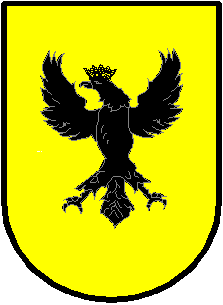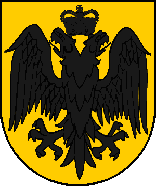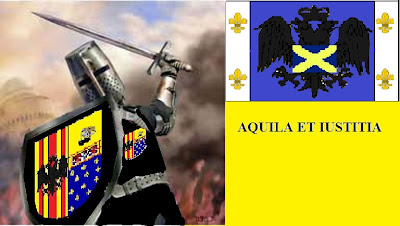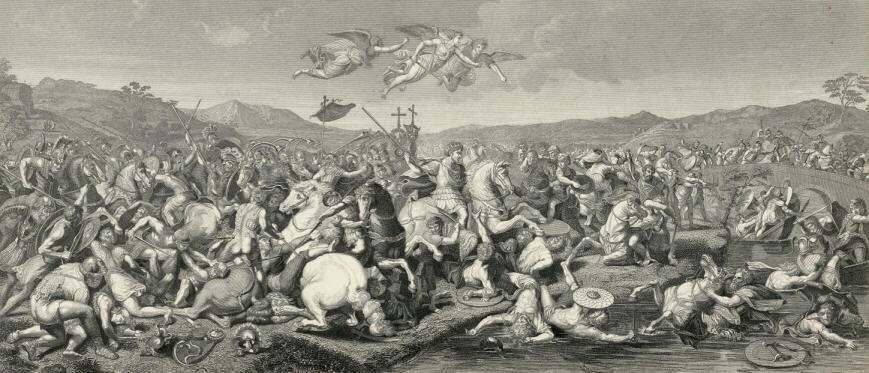
Aguilar
The meaning and origin of the surname Aguilar is definitely tied to an Eagle. It is Spanish and Jewish (Sephardic): habitational name from any of numerous places called Aguilar, from Latin aquilare ‘haunt of eagles’ (a latin derivative of aquila, and Spanish aguila ‘eagle’), for example Aguilar de Campo in Palencia, Aguilar de la Frontera in Córdoba, and Aguilar de Segarra in Catalonia. As a surname it's meaning is defined as"Sharp eyed" as an Eagle; and/or "The Eagle". Linguistically Aguilar is very similar to Aquila, a Roman name and the Black Eagle was the device used on the Legions banners. From about the year 100 a.d. until the collapse of the Empire in the year 410 a.d., Spain was merely a province of Rome. The influence of the Romans was profound, and many present day Iberian surnames owe their roots to the Roman influence. The surname itself is much later, few surnames except those where the holder was associated with specific estates, were hereditary, although this was one of them.
The earliest reference to Aguilar that I've been able to find is that of Aguilar Castle in the Languedoc region of what is today France and faces the region Aragon. The castle was a Cathar stronghold and belonged to Wilfred le Velu, Marquis of Gothie' in Catalonia who left the "Puy(rock) d'Aguilar" to his son Guilhem in 1020. He would become lord of Termes in Languedoc. In 1117 the Puy became Aguilar Castle and was owned by the lords of Termes, Vassals of the Viscounts of Trencavel. During the Albigensian Crusade, about which many recent books have been written, the castle was confiscated by Louis IX, king of France. After being given back to Olivier of Termes it was sold back to the Crown to serve as advanced outpost facing Aragon and to protect the recently annexed lands behind it for the French Crown. Aguilars would eventually sail to the New World and various other islands. Geronimo Aguilar was a translator with Hernan Cortez during the exploration of Mexico.
There has been several different types of heraldic coats of arms for each branch of Aguilars. The oldest is a yellow background with 3 red stripes and another yellow with a double headed crowned eagle. Others are yellow with a crowned eagle.




Stewart/Stuart

This famous clan surname is regarded as the royal name of Scotland. Stewart is a Scottish surname and often spelled Stuibard in Gaelic. An alternative spelling is Stuart. In Scotland after the 12th century it took on a meaning of even greater importance, and described the Steward of Scotland, the highest post in the kingdom, below that of the monarch. The progenitor of the Stewart family was a Breton knight who settled in England after the Norman Conquest; William Fitz Alain became hereditary Great Steward of Scotland during the reign of King David I and was given estates in Renfrewshire and East Lothian. Within a few generations, his descendants, who had by then relocated to Scotland, became the High Stewards of Scotland, hence the origin of the surname. One of the hereditary Stewart stewards, Walter Stewart, married Marjorie Bruce, daughter of King Robert I, and founded the royal House of Stuart (a French spelling), beginning with their son King Robert II. The "Stuart" spelling arose because there was no letter "w" in the French language and Mary Queen of Scots, in particular, became Mary Stuart, following her marriage to the Dauphin of France, later King Francis II.
The House of Stewart was the longest serving royal dynasty of Scotland. In 1603, the Stewart King James VI of Scotland became King James I of England and Wales by succession to Queen Elizabeth I. The Stewart dynasty ruled Scotland, England and Wales (with an interruption during Cromwell's Commonwealth after the English Civil War and the regicide that followed because the Stuart's were Catholic!) until 1714, when Queen Anne died and the British Crown passed to the German Electors of Hanover. The grandson of James II, Prince Charles Edward Stuart, led the last attempt to restore the Stewart dynasty to the British Crown in 1745-6 and became known to history as "Bonnie Prince Charles". This attempted coup d'état ended in the slaughter of Charles' army at the Battle of Culloden in April, 1746; when for whatever reason Charles decided not to pursue the routing enemy at the previous engagement. Those that supported the Bonnie Prince and the Stuart Dynasty were called Jacobites and were known to rally around a special flag; the cross of St. Andrew in gold on a Blue background. Long live the Stewarts!

In addition to the Royal House of Stuart, various branches of the Stewart family became Scottish peers, at various times holding the Marquisate of Bute, the earldoms of Atholl, Mar, Moray, Angus, Galloway, as well as several Lordships of Parliament. Several families of Stewarts became Highland clans in their own right, including the Stewarts of Appin, the Stewarts of Ardvorlich the Stewarts of Atholl, the Stewarts of Garth.
The Stewart clan motto is "Virescit vulnere virtus" which means "Courage grows strong at a wound". Surnames regarded as septs (sub-branch) of the Stewart clan include Cook, Cruickshanks, Duilach, France, Francis, Garrow, Jameson, Jamieson, Lombard, Lorne, MacCamie, MacCloy, MacCombich, MacGlashan, MacKirdy, MacLae, MacLea, MacLeay, MacMichael, MacMunn, MacMutrie, Moodie, Munn, Sharp. The heraldic device or crest is the pelican (in her piety) feeding her young, also a unicorn.



Which now brings everyone up to speed on how all these things have influenced Heraldry specifically with my coat of arms and banner; an amalgamation of two Catholic noble houses: Stewart and Aguilar. The first quarter is a blending of the two most ancient forms of heraldic imagery for Aguilar. The second quarter contains remnants of Stewart Coat of Arms Yellow field with Blue and White cheque design, the pelican in her piety, double red tressure flory counter-flory flanked by two lions rampant and thisle, blue field with flur d'lis. The crest is a Phoenix with red, white and blue plumes. Motto: With God's help I rise and conquer; being buckled I follow my ancestors. Banner: White outer stripes with Two Flur de lis of gold at the four corners of the banner, Blue center with crowned double headed eagle clutching the Jacobite standard.
So there you have it. I carry on the legacy of my ancestor's fight for Holy Mother Church in her defense. My battle cry "Aquila et Iustitia: the eagle, and (God's)Justice"!




